THE CENTRE FOR BIBLICAL STUDIES
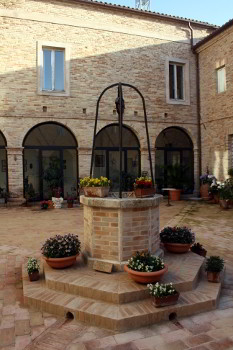
It was dedicated to Brother Giovanni Vannucci, of the Order of the Servants of Mary, with a view to preserving his prophetic spirit in the Order and in the Church, and to pursue his earnest and erudite study of the Scriptures, in response to the needs of present-day people. The main aim of the Centre is to spread the word of God through meetings, lectures and spiritual weeks in numerous Italian cities. For this purpose Alberto, Ricardo and Paolo publish the results of their studies in books, articles and pamphlets. They also collaborate with TVRS, a local TV network, which broadcasts the Sunday Gospel commentary from the Centre. The Centre’s originality lies in the fact that it is able to translate rigorously scientific bible study into an accessible language.
The purpose of this is to bridge the gap between the great ferment currently seen in the field of bible studies and the poor level of dissemination among common people. By focusing on language register it is possible to present the evangelical message without using the technical jargon that is typical of religious and clerical debate. This approach has also attracted the attention of people who are distant from or indifferent to religious matters. That is why the Centre not only welcomes believers who are interested in the Scriptures and who want to deepen the roots of their faith, but also the many non-believers who approach the sacred texts initially out of “intellectual” curiosity and who later set out on the road to faith.
Today the Centre is able to provide a great service thanks to those friends who, from the very beginning, have believed in the project and have contributed to its creation, by setting up the “G. Vannucci” Centre for Biblical Study Association, consisting of people who share and support the ideas and the initiatives of the Centre.
GIOVANNI MARIA VANNUCCI
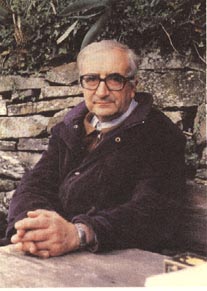
GIOVANNI MARIA VANNUCCI, a member of the Order of the Servants of Mary, was born in Pistoia on 26 December 1913. He pursued classical studies in Florence and philosophy and theology in Rome. He took solemn vows on 13 October 1936 and was ordained priest on 22 May 1937. In 1943 he obtained his certificate in Holy Scripture at the Pontifical Biblical Institute in Rome under the direction of the well-known Biblicist and philologist Prof. Vaccari. In 1948 he obtained his certificate in theology at the Angelicum Pontifical University. On several occasions he taught biblical exegesis, Greek and Hebrew, and later, History of Religions within his own order. Moved by a great love for truth and fraternity his life underwent changing fortunes. Being ahead of his time, he was often misunderstood owing to his freedom of thought. He had a passion for the Holy Scriptures, liturgy, tradition, mystical theology, linguistics and gnoseology. From 1952 his prophetic open-mindedness and fresh approach to communication led to his involvement in the wealth of cultural, religious and civil developments in Florence, along with his best-known friend and brother, Father David Maria Turoldo, whose personality was different yet complementary to his own. Being a profoundly religious man, he combined Eastern and Western spiritual traditions with a keen aptitude for interpretation and insight, which was enlightened by the reality of Christ, whom he contemplated as the Living Being and the Creative Word. Giovanni managed to provide wonderful insight for truly universal religious research from pure knowledge of the truth to the freedom of the Spirit. He was considered the spiritual witness and author of our times. He wrote copiously, edited and contributed to several magazines and publications. The culmination of his life and spiritual pursuits came in 1967 when he started a new kind of monastic life in the hermitage of “San Pietro alle Stinche” not far from Panzano in Chianti, near Florence. His aim was to provide a place where anyone might work and meditate in peace and quiet.
On 24 June of the same year, St. John the Baptist’s day, Vannucci started his new monastic experience, following the most authentic tradition of the Servites. At various times he was asked to hold courses on spiritual practice and meditation, including lectures and talks within the Provincial Chapters. He also devoted himself to the teaching of History of Religions at the “Marianum” Pontifical Theological Faculty in Rome. However he was always reluctant to leave his hermitage, preferring to lead a quiet, simple life, devoted to meditation and introspection, and encouraging others to do the same.
Father Giovanni died at the Santissima Annunziata Hospital in Bagno a Ripoli near Florence. He was lucid, to the last, serene, his mind directed towards wider perspectives, the future and the third millennium, as the doctor who assisted him reported. He is buried in the austere churchyard of San Martino not far from the early hermitage of the Servants of Mary at Monte Senario (Florence).
Biographical note by Alberto Camici http://space.tin.it/lettura/albcamic/vannucci.htm
The Centre for Biblical Studies follows the exegetic interpretation of the biblical method created by Juan Mateos. Alberto Maggi devoted this article to him in issue n. 6 of “Rocca” magazine.
JUAN MATEOS - an innovator of biblical exegesis
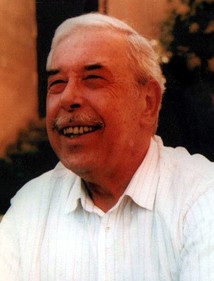
On 23 September 2003 the Spanish Jesuit, Juan Mateos, died in Malaga at the age of 86.
He was a man with a far-reaching culture and memory, ranging across the spectrum of human knowledge. He was also able to establish good relations with anybody, particularly with those who were disregarded by society. His writings and teachings were born of an extremely close examination of the biblical texts along with daily practice of the evangelical message, attained through an honest life and empathy with the humble.
Before translating the Scriptures, Mateos was one of the most prestigious experts in Eastern liturgies in the world. He lived in Rome for many years and taught at the Eastern Pontifical Institute and at the Biblical Institute, at the same time, holding lectures and courses all over the world.
While he was studying and teaching Eastern Liturgy, Mateos felt the need to examine the New Testament in order to investigate the origins of various rites, to better understand why there is so much diversification within the Catholic Church itself. He began to wonder why certain rules are considered essential by the Latin Rite and not by the Eastern Rite and vice versa. Again he wondered why some rules were forbidden or allowed by the Code of Roman Canon Law and not by the Eastern Tradition.
His research into the sources of the different Christian traditions led him to bring perspective to certain categorical formulations which, at that time, the Catholic Church declared to be absolute. Moreover, he was already open to the variety of forms of expression adopted by Christianity through the centuries, long before the Second Vatican Council had recognized them.
At the very pinnacle of his teachings, when his research was considered essential ready for the study and renewal of Eastern Liturgy, Mateos abandoned this discipline and went in search of the Christian sources, beginning a systematic study of the New Testament. Indeed, he realized that despite bringing him scientific prestige, his erudite work in the liturgical field had no influence on reality, wherea he saw that the dynamism of the Gospels were able to change the lives of believers.
ANCIENT TEXTS AND CONTEMPORARY LANGUAGE
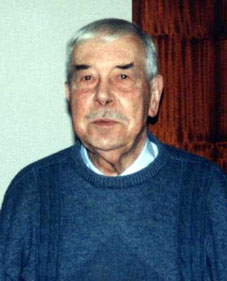
Being a skilled expert in Greek as well as in the other biblical languages, Mateos began a close analysis of the Evangelical texts that he had previously examined during his study of the ancient lectionaries (Old Testament texts used during the liturgy).
As a result of his research, the Spanish bishops invited him and the Biblicist, Luis Alonso Schökel, to prepare a new Spanish translation of the biblical texts used in the liturgy.
This initial assignment led Mateos and Schökel to undertake a complete translation of the Bible, taking particular care to be faithful to the original text, focusing on the literary style and the contemporary language. Thus in 1975 the “Nueva Bibla Española” was published. It was not called “new” because it was the most recent Spanish translation of the Bible, but rather because Mateos and Schökel had used totally new criteria, never used before in this kind of translation. Thanks to exegetic, linguistic and stylistic principles, each biblical text recovered its style and literary context. Thus the “Song of Songs” was translated as love poetry “Job” as a theatrical work and the “Qoeleth” in the concise style of a sage. The American Bible Societies considered the Nueva Biblia Española, as the best translation into a European language both for its literary beauty and linguistic precision.
As he had done for the Eastern Liturgies, Mateos invented his own exegetic method for his study of the New Testament, based on a philological and semantic analysis of every single word and he also published several works on the subject: El aspecto verbal en el NT, (The verbal aspect of the New Testament; 1979); Cuestiones de gramatica y lexico en el Nuevo Testamento (Grammatical and lexical issues in the New Testament; 1979); Metodo de analisis aplicado al griego del Nuevo Testamento (Applied analysis of Greek in the New Testament; 1989). His research brought a new exciting light to the biblical texts. While he was translating the Gospels, Mateos’ extraordinary knowledge of biblical Greek was put painstakingly to the test: he took a close and detailed look at the semantic and semiotic aspects of the text, and sometimes analysed a single phrase for weeks on end until he had uncovered its inmost meaning.
With his proficiency in philological analysis and great understanding of the cultural background of the Gospels, and the style and literary techniques of the time, Mateos was able to bring out the many subtle references to Old Testament passages that are essential to a better understanding of the thinking of the Evangelists.
A WORK OF ART AFTER RESTORATION
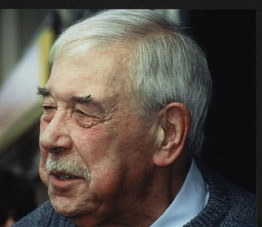
The result of so much work was a translation of the Gospels that was as faithful as possible to the thinking and art of the Evangelists. The translation caused a sensation owing to the freshness of the language and their comprehensibility. Like a work of art after a total restoration, the Gospels shone with a new light that was illuminating for some, but intolerable for others.
Indeed, the new translation of the Bible revealed that the Gospels did not lend themselves to religious ideology or to justifying dogmatic theories sanctioned by usage. On the other hand, it was not possible to expect that the New Testament texts, which expressed the Christian experience from different points of view and in a non-systematic, heterogeneous way, could be translated and commented using the theological formulations belonging to the centuries to come.
According to Mateos’ reading and translation of the original texts of the four Gospels, Jesus was wholly oriented to the benefit of mankind and presented a totally new relationship with God, like the one between a father and son. A relationship that did not assume that every holy institution, from the Temple to the Law, was absolute, and which rendered the mediation of ministry and cult unnecessary. The kingdom of God was Jesus’ aim, which, according to the entire Jewish tradition, was the fair society that the Messiah was to establish. Unlike the kingdom that Israel was expecting, this society did not base itself on observance of the Law, but on receiving the Spirit that changes mankind, and it was not addressed only to Israel, since it’s horizon was universal. In the Gospels, Jesus’ Father showed himself to be a God who loved mankind, a God whose purpose was to create a man with the divine spark. It was not breaking the laws and the commandments that was sinful, but the refusal of the fullness of life offered by the Father.
Mateos combined his scientific activity with pastoral service; he published books written in a simple, clear language so that as many people as possible could have the opportunity of discovering the beauty of the Gospels. In 1972 his first popular book was “Cristianos en fiesta. Más allá del cristianismo convencional” (Christians Alive. Beyond conventional Christianity), whose very title showed the new light deriving from the Gospels. It became clear that not only were many things that Christians regarded as holy were not so, but also that they prevented communion with God. Conversely, what was considered a violation or a sin was insignificant in the eyes of God. A series of texts followed this first book. They were suitable for all those people who wished to have a better grasp of the Gospels. “L’alternataiva Gesù” (“The Jesus Alternative”; Cittadella, 1989), “L’utopia di Gesù” (“The Utopia of Jesus”; Cittadella, 1991) and “Vangelo: figure e simboli” (“The Gospel: figures and symbols”; Cittadella, 1991), are essential reading for an understanding of the language and the significance of the images used by the Evangelists.
In 1979 Mateos published a co-translation and commentary of the Gospel of St. John with Juan Barreto (“Il Vangelo di Giovanni”, Cittadella, 1982) revealing the force of the fourth Evangelist and the beauty of his message focused on God’s plan for mankind: for man to be the expression of His own divinity.
After the election of Pope John Paul II, Mateos left Rome and in 1980 he moved to Granada, where he went on with his research on St. Mark’s Gospel. In 1982 he published his study “Los “Doce” y otros seguidores de Jesus en el Evangelio de Marcos” (The Twelve and other followers of Jesus in Mark’s Gospel), which cost him his teaching post at the Pontifical University in Rome. In this book Mateos claimed that the twelve apostles in the Gospel of St. Mark should not be considered a numerical entity since, according to Mark, the number twelve represented all of Jesus’ disciples from Israel.
A NEW EXEGESIS
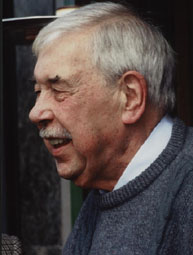
Freed from his teaching post, Mateos directed all his energies to the translation of the evangelical texts, and from then on, the literary, scientific and pastoral output of Mateos and his team of international Biblicists, began to bear abundant fruit. In 1981 he published a co-translation and commentary of St. Matthew’s Gospel with Fernando Camacho (Il vangelo di Matteo, Cittadella, 1986), with a striking interpretation of the Beatitudes. They were not a comforting litany for the world’s afflicted, but rather an encouraging invitation to eliminate the causes of their suffering. Jesus says that the poor, the distressed and the hungry are not blessed because of their status, but because their suffering will be removed by the community of believers.
A first translation of St. Mark’s Gospel followed the one of the Gospel of St. Matthew (Marco, testo e commentario, Cittadella, 1996).
Ten years after his experience in Granada, Mateos moved to Cordoba where he trained a group in the study of Greek, thus fulfilling his great dream: a Scientific Dictionary of biblical Greek (Diccionario Griego-Español del Nuevo Testamento).
A tireless worker, Mateos was so fond of learning that he studied the Gospels from morning to night. He continued working to finish the third volume of the commentary of St. Mark’s Gospel right up to the last days of his life, despite being seriously ill.
The last book published in Italian by Juan Mateos and Fernando Camacho was “Il figlio dell’Uomo, verso la pienezza umana” (“The Son of Man, towards human fullness” Cittadella, 2003). This book represents the convergence of Mateos’ exegetic work with his life experience. As we read it, we experience the force of a fulfilled life, placed at the service of others. At the end of his life, Mateos had an even better understanding of that fullness in Jesus to which everyone is called: “everyone who discovers that God is love, giver of boundless, unconditional life and that he or she is the object of this love. This leads to self-acceptance and ensures the success of his life project. The new life he experiences leads him to the understanding that mankind and the world must be the object of his own love, as they are for God” (Il Figlio dell’Uomo “The Son of the Man” p. 261)

At his death, Mateos left a huge heritage, a great deal of sorrow and infinite gratitude. The Good News is as good as ever, thanks to his studies and his interpretation of the evangelical texts. Numerous Christian groups and many individuals are inspired by his works and have discovered a Father who loves His children regardless of their conduct and who, in the name of love, gives them a life that overcomes death, the life that Juan is now experiencing.
Mateos was already seriously ill when he was asked to sum up his experience of Christ in one sentence. He answered: “The Lord always says to me: ‘Don’t worry, trust me’”.
Mateos’ last words were: “I’m very happy”.
